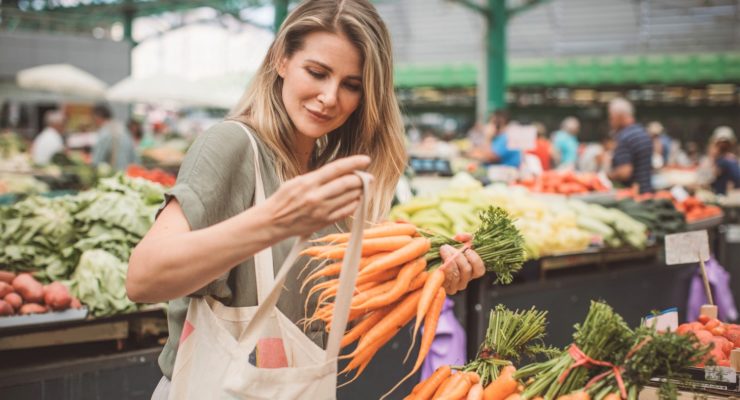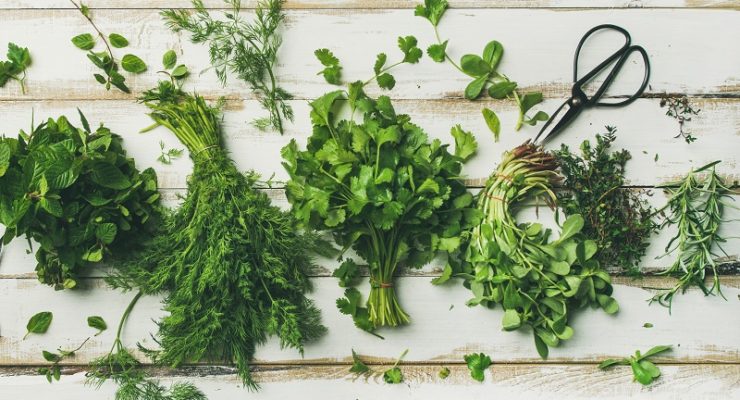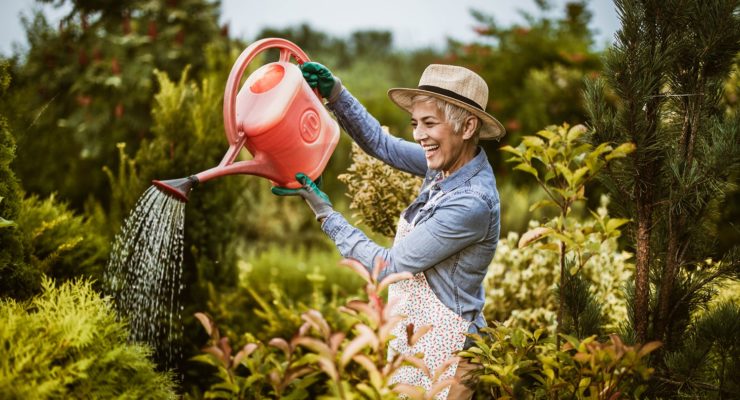Planting a garden can take your healthy lifestyle to the next level. When you grow your own at home, you get the freshest, ripest, best-tasting vegetables possible. And there is a deep satisfaction that comes with eating and sharing healthy food you produced. Home gardening is a light, low-impact activity that burns calories, keeps you limber and brings you outdoors in the sunshine and fresh air.
Here at Nutrisystem, we recommend getting in at least 30 minutes of physical activity each day. Home gardening is the perfect way to achieve this! It also helps you keep a steady supply of non-starchy vegetables that you can incorporate into your healthy meal plan.
Now here’s the best part: you don’t need experience or even space to pick homegrown food from spring to fall. These 10 simple home gardening tips for beginners will help you be successful.
1. Look for the light.

Vegetable plants need lots of sunlight to be productive and healthy. Tomatoes, cucumbers, peppers and other varieties that bear fruit you pick grow best when they are in the sun all-day during the summer. Half-day sun is enough for leafy plants, such as lettuce, spinach and cooking herbs. Before you choose a spot for your garden, look at where the sun shines and where the shade falls. If you don’t have a sunny area where you can plant in the ground, consider growing in containers that you can place where you do have enough light.
2. Grow what you will eat.

Almost any non-starchy vegetable you like fares well in a home garden. Some crops give you a steady harvest for weeks or even months at a time and they make the best use of your garden space. These include beans and peas, tomatoes, peppers, cucumbers and zucchini. You can trim loose-leaf lettuces for your salad bowl and they will keep making new leaves. Herbs, such as basil, dill and parsley, provide you with trimmings that you can use to flavor your meals all season long. All of these are easy to grow in the ground or in pots.
3. Set up raised beds.

Garden plants need loose soil so their roots can spread out and they need the soil to drain off excess water after heavy rains. The best way to create those conditions is to set up a rectangular frame that you fill with a soil blend that includes compost. You can buy raised bed kits made from wood or plastic or just build one yourself with ordinary lumber. Either way, make sure the beds are no more than four feet wide so you can reach into the middle to harvest or pull weeds without stepping on and packing down the soil.
4. Consider containers.

If you don’t have space on the ground or just want to start small, try growing vegetables in pots. Crops in containers need regular, even daily, watering, but they are otherwise easy to care for. Be sure to use light potting soil mix rather than soil you dig up from outside, which is too dense for container plants. Look for the word “compact” or “dwarf” on the plant tag for varieties that are best suited to growing in containers.
5. Start with seedlings.

The process of getting seeds started isn’t hard, but it can take extra time and attention. When you’re a beginner, skip that step and buy little seedlings at the garden center. Pass on any plants that already have flowers or fruit on them. You want the seedlings to begin growing by directing their energy into putting down roots in your garden rather than making or ripening fruit right away.
6. Water wisely.

Just like people, plants need to stay hydrated, especially on hot summer days. Whenever it doesn’t rain for a few days, check to see if the soil is still moist by pushing your finger into the ground up to the second knuckle. If it doesn’t feel slightly damp, you should water. Spray the water on the soil rather than the leaves so the roots can drink it up. The best time to water is first thing in the morning so the plants have a steady supply during the heat of the day. If you don’t have time in the morning, watering an hour or two before sunset in the evening also works well.
7. Feed naturally.

Plants need nutrients to grow up robust and healthy and they grow best when you feed them with natural ingredients. Look for liquid fish-and-seaweed fertilizer (sold in garden centers and nurseries), which you blend with water and sprinkle on the plants. Follow the package instructions carefully. Too much fertilizer is as bad for plants as excess food is for people.
8. Spread mulch.

One simple act can make your garden so much easier to care for and more productive. Cover every open inch of soil around your plants with a two- to three-inch layer of mulch and replenish it during the growing season. Mulch blocks weeds from coming up and keeps the sun from baking the moisture out of the soil, so you need to water less often. In vegetable gardens, the best kinds of mulch break down gradually, feeding the earthworms and other helpful creatures in the soil. Dried grass clippings from your lawn, straw or shredded leaves are all good mulch options.
9. Ignore insects.

You will see insects in your garden. Believe it or not, that’s a good thing because the overwhelming majority cause no damage to plants. Many help with pollination, so your harvest gets bigger. Others eat the plant-chewing pests. Resist the impulse to douse insects with pesticides and let them all work in harmony to keep your garden healthy.
10. Harvest often.

The rewarding part of home gardening is picking your fresh produce. Check in at least every other day and try to take all that’s ripe. When fruit is left on the vine, the plants will slow down or stop making new ones. If you have more than you can eat, offer it to neighbors or a local food pantry. That’s sharing the wealth and good health!
The post Gardening with Scott: 10 Home Gardening Tips for Beginners appeared first on The Leaf.
from The Leaf https://ift.tt/qaoJiMS
source https://weightlossofrecipes.blogspot.com/2022/04/gardening-with-scott-10-home-gardening.html








0 Comments